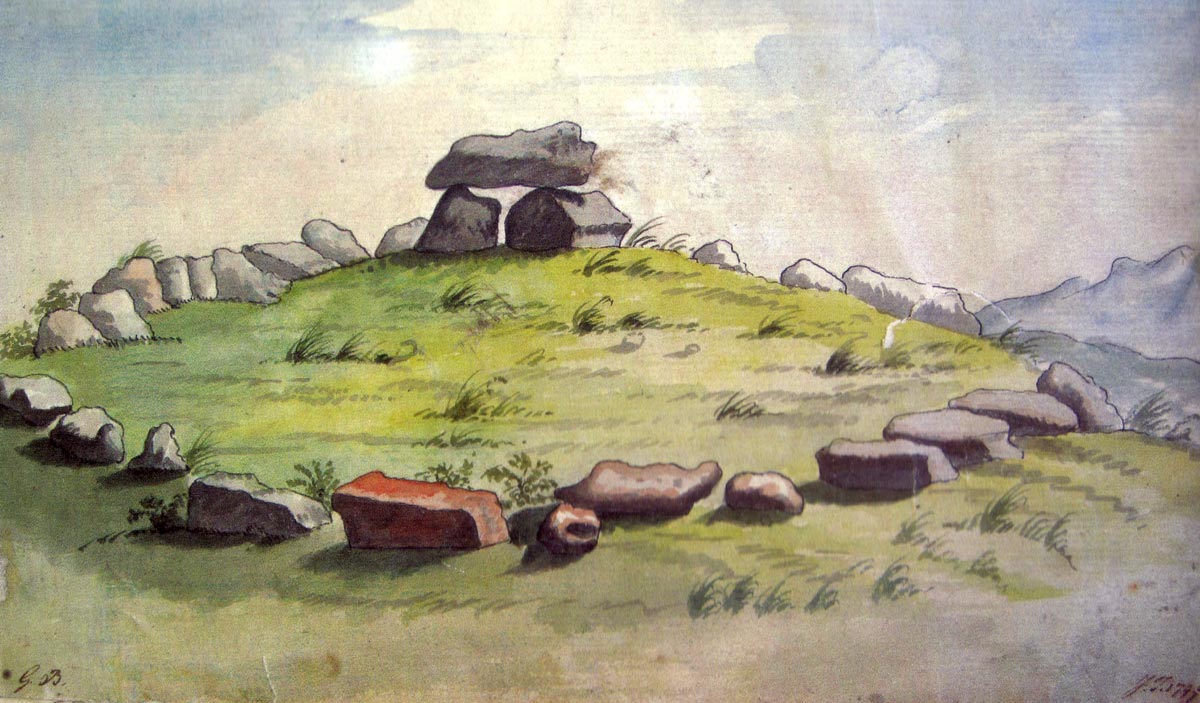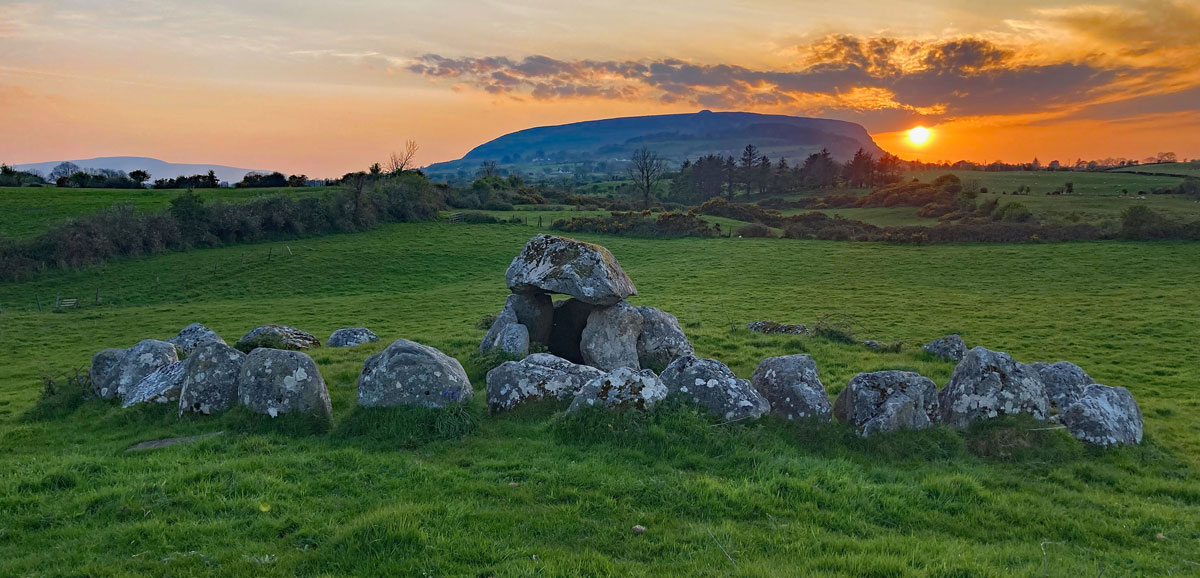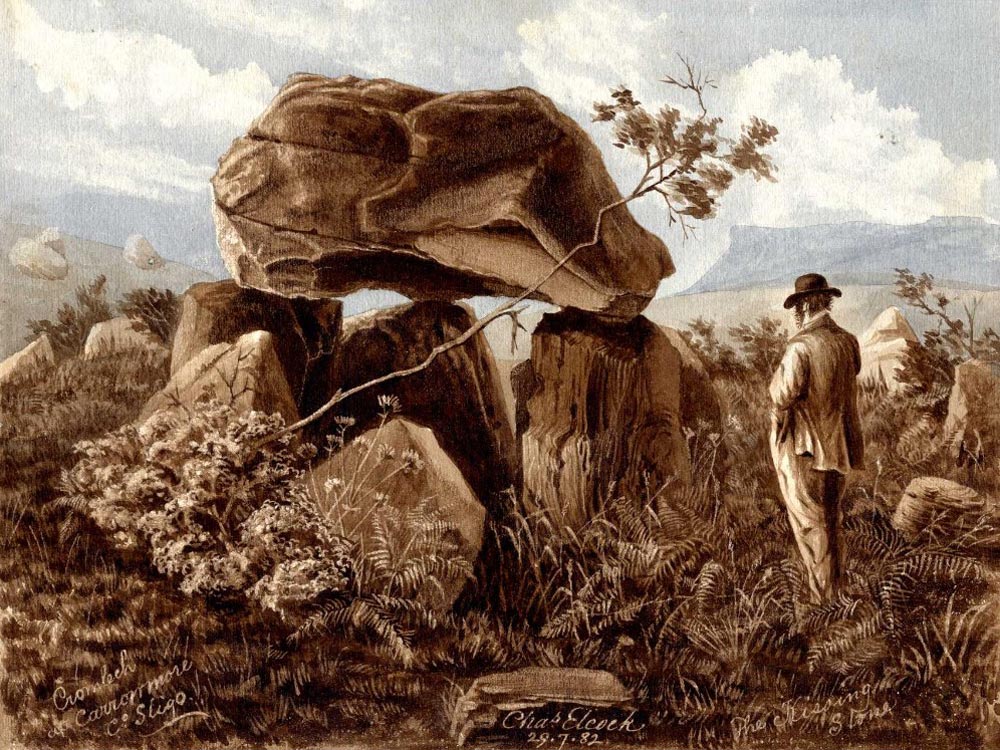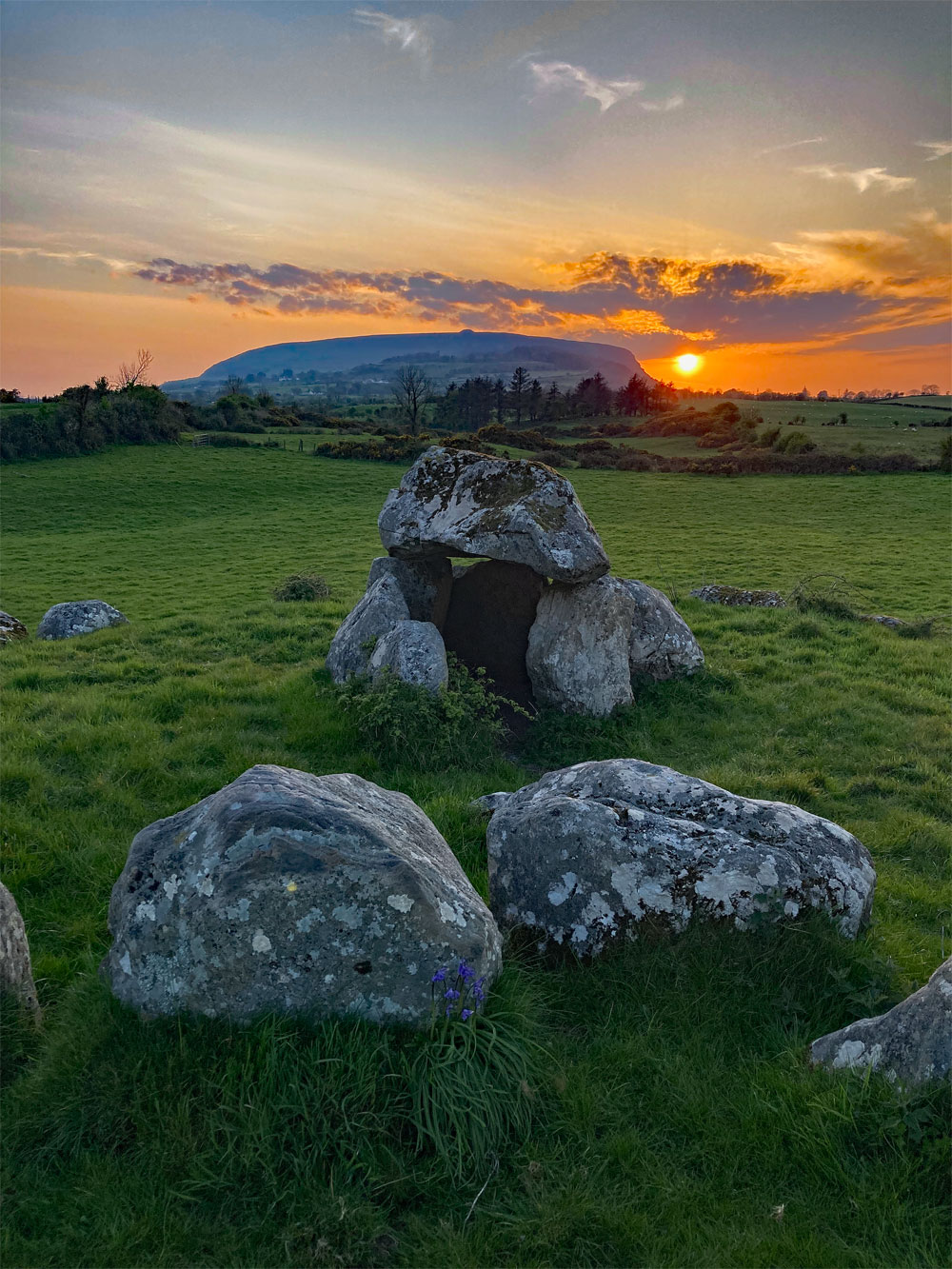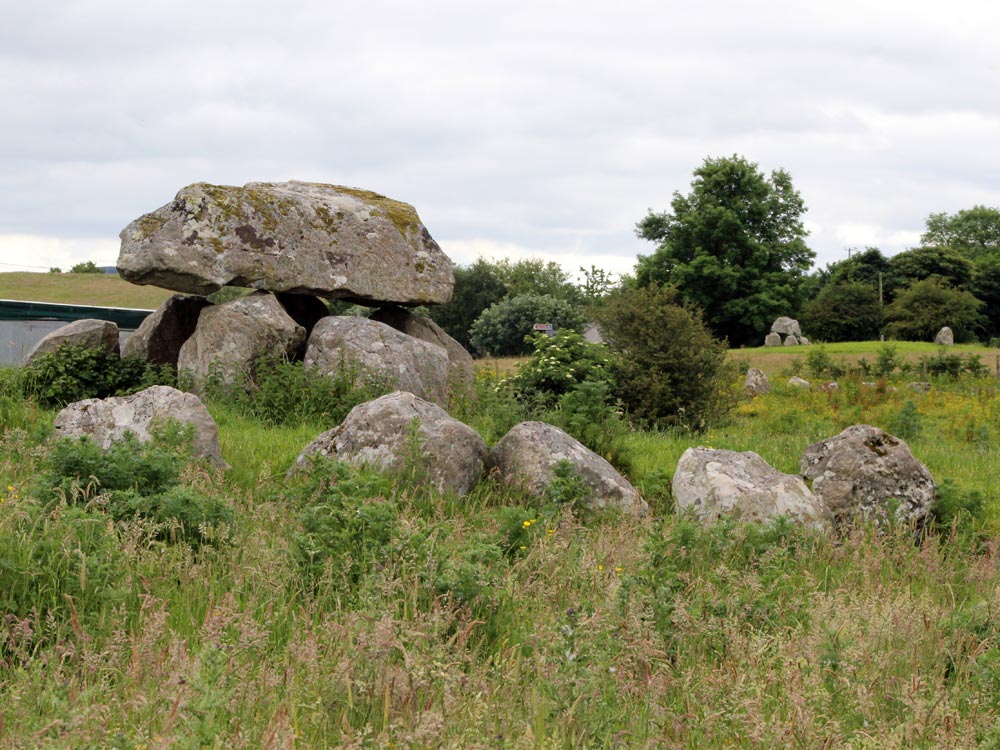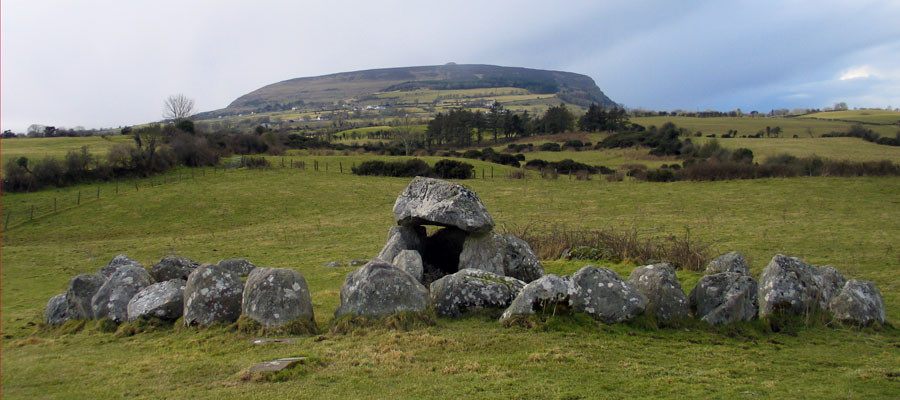The Kissing Stone
The Kissing Stone, which was also known as Leaba na Fian during Victorian times, is the most complete monument remaining at Carrowmore. The earliest illustration which dates from Gabrial Beranger's visit in 1779, is shown above; the monument has been remarkably little disturbed since that time.
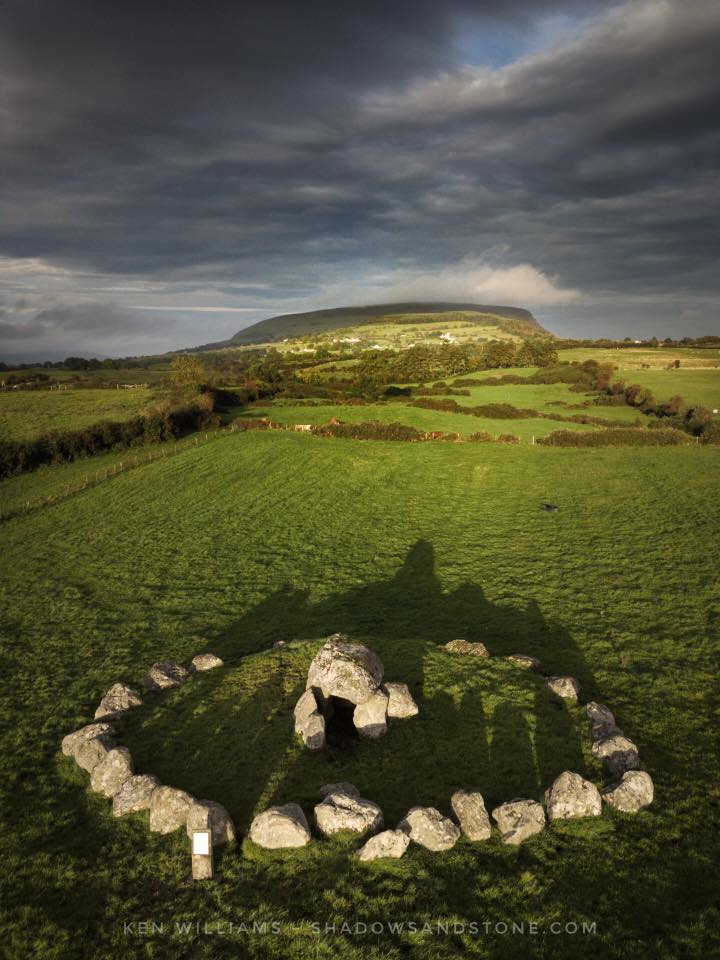
Photograph © Ken Williams, Shadows and Stone.
The Kissing Stone is a classic tertre, an early open air passage grave. A complete circle of thirty-two large boulders, measuring thirteen meters in diameter surrounds platform supporting the monument. The platform here is scarped or scraped into the side of the hill. The inner circle of smaller stones eight and a half meters in diameter, indicates that the monument was free-standing, and was never covered with a cairn. The circle containing a raised earthen platform or tertre within the boulder ring is a common design feature consistantly used in the construction of the Carrowmore monuments.
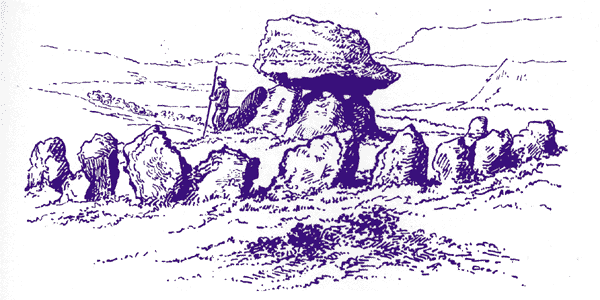
The impressively graceful capstone is huge, and balances effortlessly upon the points of three upright chamber stones. The five sided chamber is a spacious area compared to most of the other Carrowmore dolmens. The entrance opens eastwards, aligned, according to Frank Prendergast, towards the equinox sunrise as it appears over Carns Hill four kilometers east of Carrowmore. All of the monuments at Carrowmore function individually as sundials, with the capstones projecting shadows onto the boulder circles and inner rings or circles.
Excavations
As one of the largest and most accessible of the Carrowmore dolmens, the Kissing Stone was doubtless dug many times in the past. Roger Walker was known to have dug all the Carrowmore chambers during his undocumented treasure hunting excavations in the 1830's and 1840's.
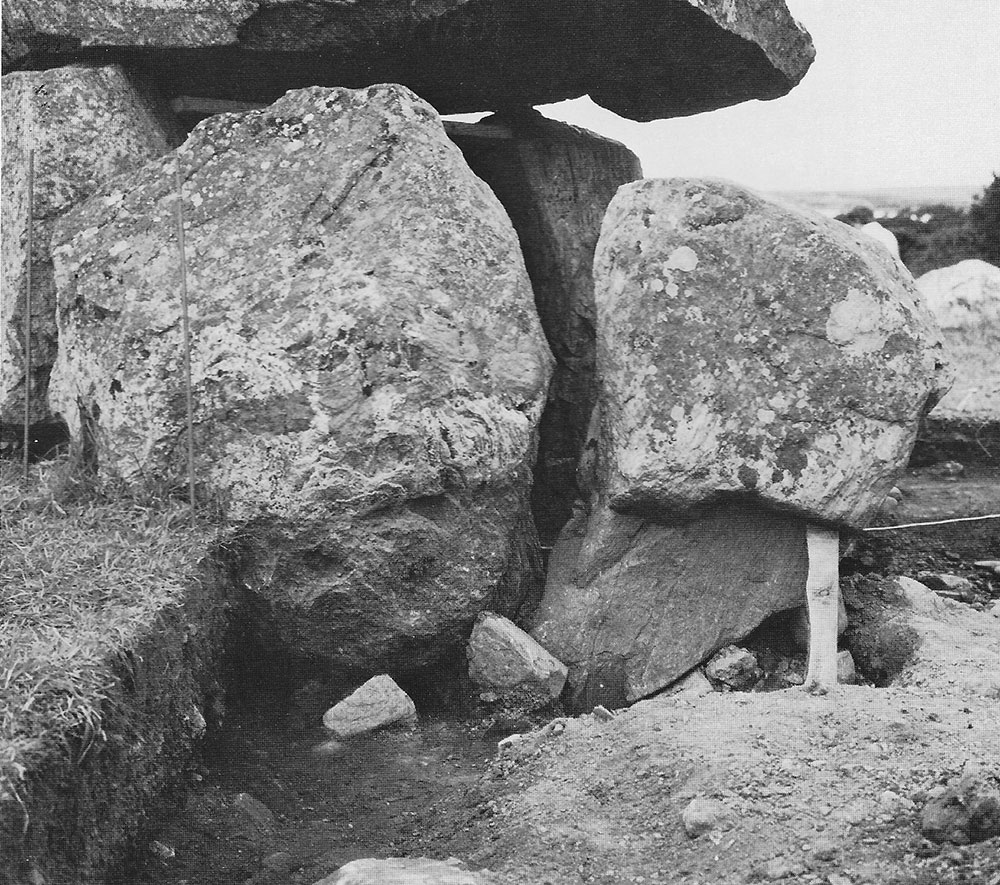
The monument was excavated in 1977 and 1978 by Göran Burenhult and his Swedish team. The monument had been thoroughly cleared out by the time Wood-Martin excavated it in the 1880's. However, Burenhult found cremated bones in various deposits, which amount to about one kilogram in weight.
Fragments of red deer antler pins, a piece of chert, a fine arrow-head and a limestone marble were also found. An interesting discovery was a collection of about 200 unopened seashells found in a pit just outside the circle, which may be some kind of offering, or date from a later period. It seems from genetic results on neolithic diets that the Carrowmore people did not eat shellfish.
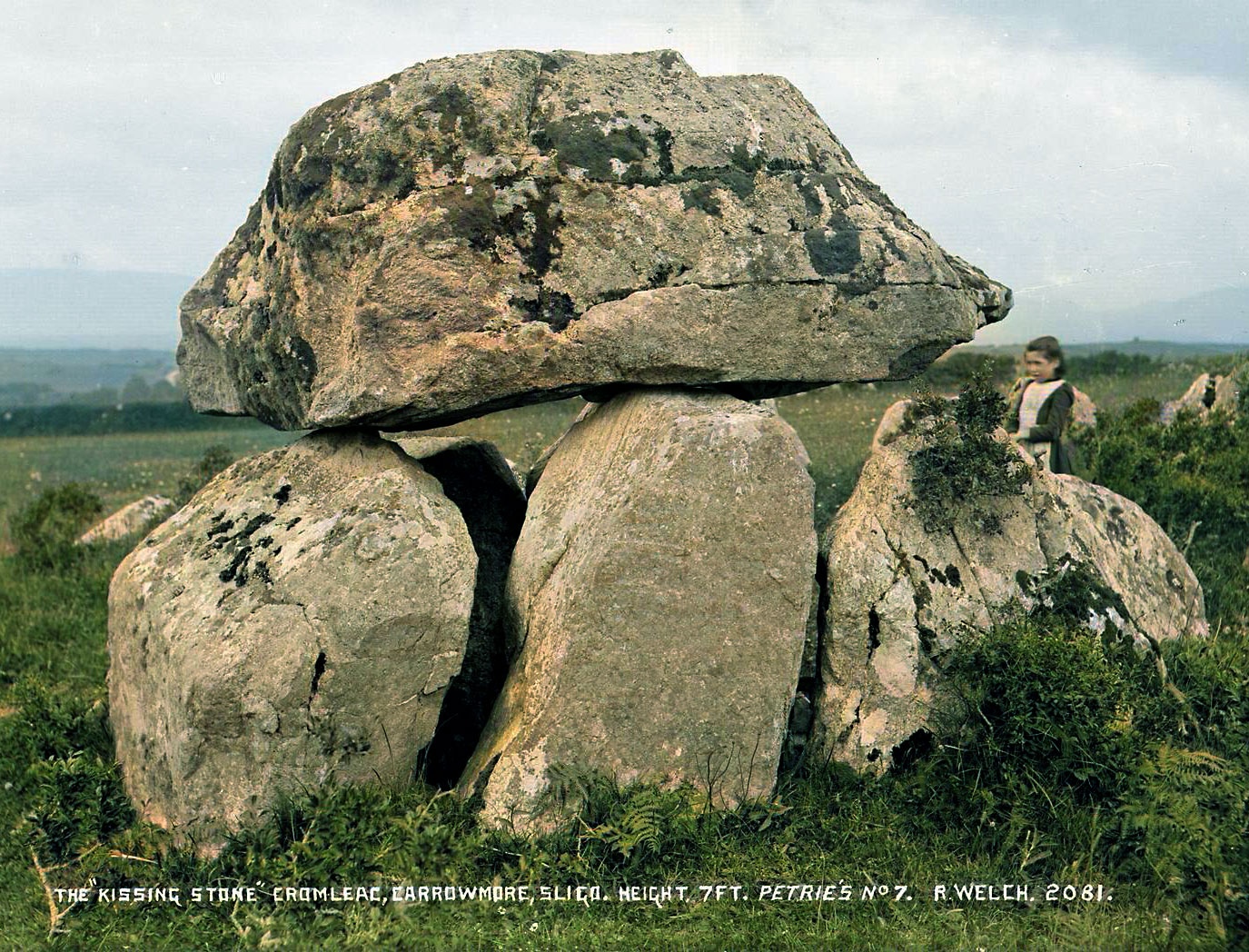
The floor of the chamber was flagged; a post-hole discovered under the chamber floor may indicate that some earlier form of monument, perhaps a totem pole of some kind, may have preceeded the dolmen. There are a few stones remaining which seem to indicate a short passage opening to the east and away from Carrowmore. The dolmen is quite tall, and has plenty of room within the chamber, unlike, for example the Phantom Stones, which has a tiny chamber.

